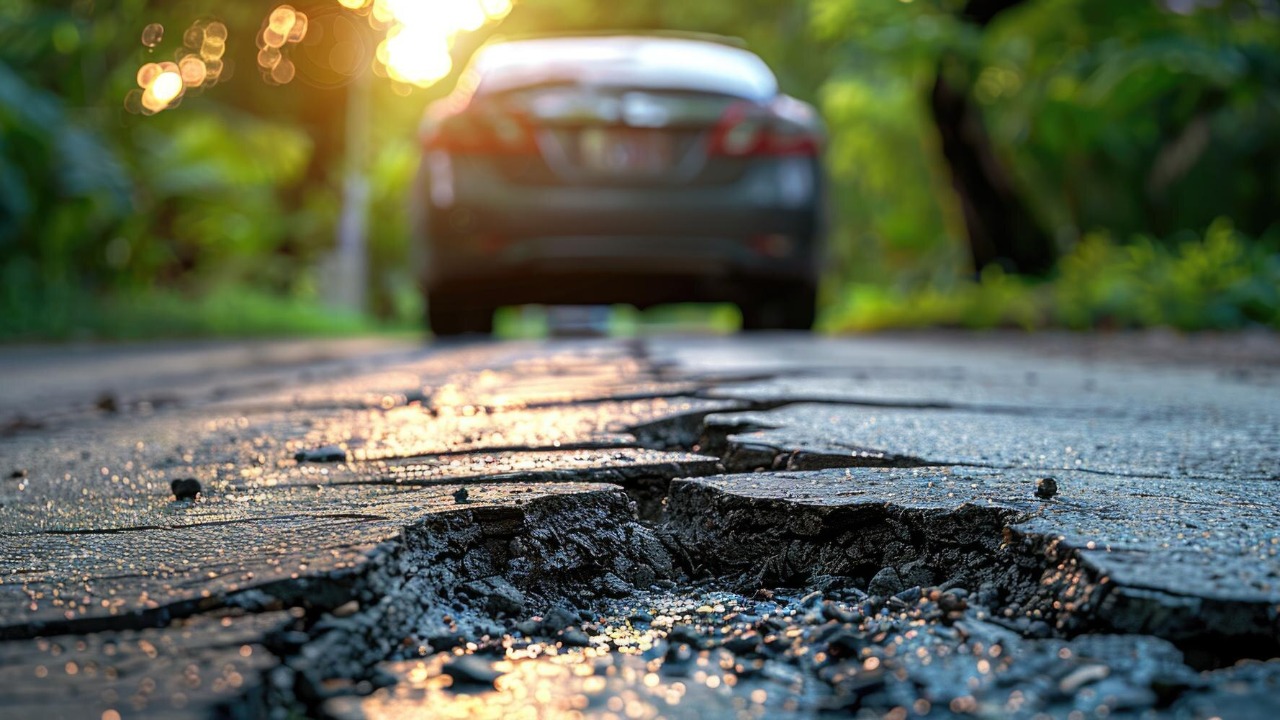
As the world veers toward an electric vehicle (EV) future, new research implies that the burgeoning weight of these vehicles may escalate road damage. This piece delves into these recent findings and highlights the prospective implications for infrastructure and sustainability.
The Weight Difference Between EVs and Conventional Vehicles

Electric vehicles, on average, tend to weigh more than their conventional petrol/diesel counterparts. This can be attributed to the additional components they house, such as heavy battery packs and electric motors. For instance, the Tesla Model S weighs around 2,241 kilograms, a significant increase compared to the BMW 3 Series, which weighs around 1,545 kilograms.
The key contributing factor to the additional weight in EVs is the battery. An electric vehicle’s battery, which stores the energy that propels the car, is considerably heavier than a conventional car’s fuel tank. The increased weight is further compounded by the electric motors and other associated components required for the vehicle’s electric drive system.
The Impact of Vehicle Weight on Road Damage

Vehicle weight plays a significant role in the deterioration of road surfaces. A scientific consensus has emerged, suggesting that road damage increases exponentially with vehicle weight. According to a study published in the Journal of Infrastructure Systems, the heavier the vehicle, the more damage it does to the road surface. This means that EVs, which are typically heavier than conventional vehicles, are likely to cause more road damage.
The formula used by engineers to calculate road wear indicates that doubling a vehicle’s weight increases road wear not by twice as much, but by a factor of 16. This is a significant finding, indicating that even a small increase in vehicle weight could lead to considerable road damage over time.
Potential Consequences for Infrastructure

The increased road damage caused by heavier EVs could have significant implications for road infrastructure. The increased wear and tear could result in higher maintenance costs and more frequent road repairs. Additionally, roads may need to be resurfaced more often, leading to increased disruption for road users.
The issue extends beyond roads. Structures such as bridges and car parks, which were designed to accommodate lighter vehicles, may face durability issues with the increased weight of EVs. A report in The Guardian raised concerns about the ability of the UK’s infrastructure to cope with the increased weight of electric vehicles.
Mitigating the Impact of Heavier EVs

Despite the challenges posed by the increased weight of EVs, there are potential solutions. Advances in road materials and construction techniques may help mitigate the impact of heavier vehicles. For example, the use of high-performance concrete and asphalt could prove more resistant to the increased weight of EVs.
Policy measures could also play a part in compensating for the increased infrastructure costs. One possibility is the introduction of weight-based road taxes, which would require owners of heavier vehicles to contribute more towards road maintenance costs. This strategy could help offset the increased wear and tear caused by heavier vehicles while also encouraging manufacturers to develop lighter EVs.
The Trade-Off Between Sustainability and Infrastructure Damage

The transition to electric vehicles presents a complex trade-off between environmental benefits and potential infrastructure costs. While EVs offer significant reductions in greenhouse gas emissions, their increased weight could lead to higher infrastructure maintenance costs. This balance is crucial to consider as we continue to push for a more sustainable future.
The importance of continued research into this matter cannot be overstated. As we seek to mitigate the environmental impact of transportation, we must also ensure that our infrastructure can support these changes. As pointed out by the Center for Transportation Research, the transition to EVs must be balanced with the need to maintain our roads and bridges.
As we move towards a future dominated by electric vehicles, understanding these challenges and seeking solutions will be crucial. While the transition will undoubtedly present difficulties, the potential environmental benefits make it a challenge worth tackling.